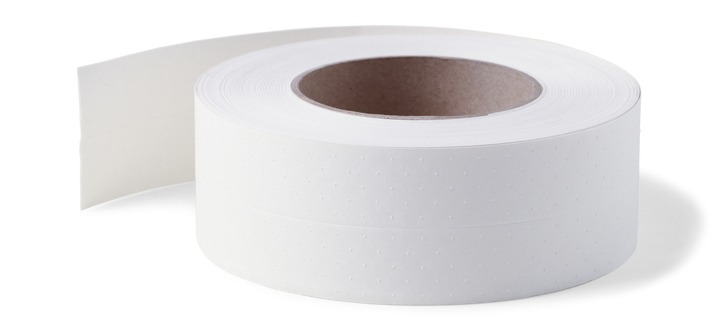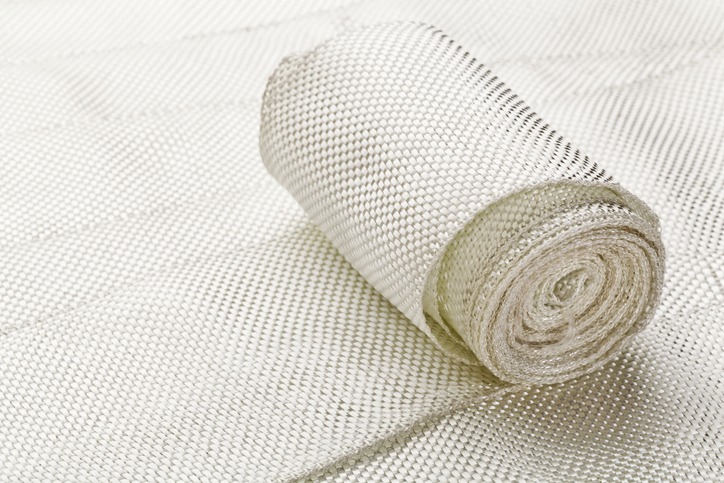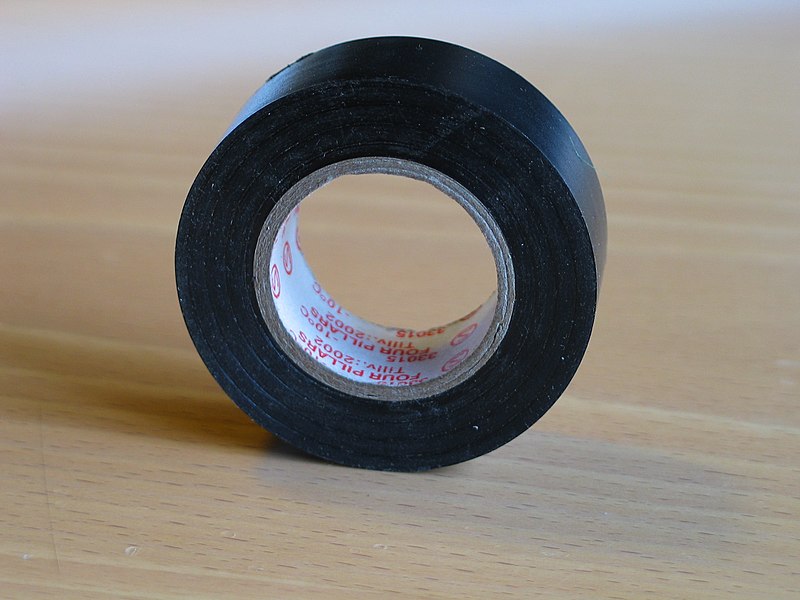Have you ever wondered if one type of drywall joint tape truly outperforms another, or if it’s all just a matter of preference? You’re not alone in this query. With options ranging from paper tape, known for its cost-effectiveness and ease of use, to mesh and fiberglass tapes that boast durability and moisture resistance, the choice can seem overwhelming. Each type has its dedicated application, whether you’re working on a basic room renovation or a specialized area needing moisture or fire resistance. Deciding on the right tape can greatly affect the finish and longevity of your project. Let’s explore the characteristics and best uses of these tapes, ensuring you’re equipped to make an informed decision for your next drywall finishing project.
Understanding Drywall Tape
Drywall tape is essential for sealing the seams between sheets, ensuring the integrity of your walls and preventing deterioration. You’ve got a variety of types at your disposal, each designed to meet the specific needs of your project. Among the most common are mesh and paper drywall tapes, each with its unique set of characteristics and applications.
When you explore the types available, you’ll find options like fiberglass, moisture-resistant, and fire-resistant tapes. These specialized tapes offer features that can be critical depending on the environment you’re working in. For instance, if you’re dealing with a high-humidity area, a moisture-resistant tape can be an essential addition.
Choosing the right joint tape is no small task. You’ve got to think about the project requirements and the desired finish. Plus, sizes range from small to extra-large, making it easier to match the tape to the job’s scale for efficient application.
Some tapes boast self-adhesive properties, simplifying the installation process, while others are designed for mold resistance, important for maintaining a healthy environment. Understanding these options allows you to tailor your approach, ensuring a flawless finish for your drywall project.
Paper Tape Advantages
After exploring the variety of drywall tapes available, let’s focus on the benefits of using paper tape for your projects. One of the key advantages of paper tape is its cost-effectiveness. It’s an affordable option that doesn’t skimp on quality, making it a smart choice for a range of projects, from small repairs to major renovations.
Paper tape is not only budget-friendly but also boasts impressive strength and durability. It bonds exceptionally well with drywall mud, creating a strong joint that’s resistant to cracking. This means your walls will maintain their integrity longer, saving you time and money on future repairs.
Another advantage of paper tape is its pliability. It’s easy to manipulate, allowing for smooth application and seamless shifts between drywall sheets. This can reduce the effort and time spent on finishing, which is especially beneficial for DIY enthusiasts and professional contractors alike.
In addition, paper tape is widely available and environmentally friendly, making it a convenient and sustainable choice. It’s a practical solution for those looking to minimize their environmental impact while achieving professional results in their drywall projects.
Mesh Tape Benefits
Switching gears from paper tape, let’s focus on the advantages of using mesh tape for your next project. You’ll find its durability, ease of application, and enhanced crack resistance incredibly beneficial, especially in areas prone to moisture. This makes it not just a choice, but a smart one for ensuring long-lasting results in your tiling and drywall endeavors.
Mesh Tape Durability
Given its construction from fiberglass, mesh tape offers exceptional durability and resistance to mold, making it an ideal choice for areas exposed to moisture. You’ll find it a reliable ally in moisture-prone areas like bathrooms, where traditional paper tape might falter. Because of its fiberglass makeup, this tape doesn’t just resist mold; it stands up to the rigors of tile installations, ensuring your work lasts. Its strength is particularly beneficial for backer boards in tile projects, maintaining the integrity of your installation. Compared to paper tape, mesh tape’s superior moisture resistance and durability make it the preferred choice in environments where moisture is a concern. This makes it not just a practical option, but a necessary investment for long-lasting results.
Application Ease
Beyond its durability, mesh tape’s self-adhesive nature simplifies the application process, making it a user-friendly option for both experts and novices alike. You’ll find mesh tape easy to apply directly to drywall seams, eliminating the need for a first layer of joint compound. Its sticky backing thus guarantees a secure bond, leading to a smoother finish. Mesh tape excels in corners and angles, providing a professional look without the hassle of bubbling, a common issue with non-adhesive tapes. Compared to traditional paper tape, mesh tape offers a quicker application. This efficiency is ideal for DIY enthusiasts or anyone looking to streamline their drywall finishing process. With mesh tape, you’re not just working smarter; you’re also achieving better results with less effort.
Crack Resistance Improvement
When it comes to enhancing crack resistance in your drywall projects, opting for mesh tape can make a substantial difference. Mesh tape is specially designed to boost the durability of your walls by preventing cracks, especially in high-stress areas like corners and seams. Here’s how mesh tape contributes to the structural integrity of your drywall:
- The open mesh design allows joint compound to penetrate deeply, creating a stronger bond.
- It’s ideal for reinforcing joints, greatly reducing the likelihood of cracks over time.
- By maintaining the structural integrity, mesh tape guarantees your drywall installations remain pristine for longer.
Incorporating mesh tape into your drywall projects means you’re investing in a long-term solution that keeps your walls looking great by effectively preventing cracks.
Fiberglass Tape Uses
Fiberglass tape, renowned for its durability and tear resistance, offers an excellent solution for reinforcing drywall seams against cracking. When you’re in the market for something that’ll last and keep those pesky cracks at bay, Fiberglass Mesh Drywall Tape is your go-to. Its unique composition makes it less prone to moisture damage, which is critical in areas that see a lot of humidity or direct water exposure. You’ll find it incredibly useful for both flat seams and tricky corners, ensuring your walls stay intact and look pristine.
What makes this tape particularly appealing is its moisture-resistant qualities. It’s not just about keeping the seams together; it’s about preventing mold growth and maintaining the integrity of your drywall over time. And let’s not forget the convenience factor—most options come self-adhesive. That means you’re getting a durable, tear-resistant, and easy-to-apply solution that sticks where you need it without a fuss. Whether you’re a seasoned pro or a DIY enthusiast, using Fiberglass Mesh Drywall Tape can help you achieve that professional finish, keeping your walls strong and seamless for years to come.
Moisture-Resistant Tape Features
After exploring the benefits of Fiberglass Mesh Drywall Tape, let’s focus on moisture-resistant tape features that play an important role in protecting your walls in damp environments. Moisture-resistant tape is your go-to solution to enhance the durability of drywall installations in places prone to wetness and humidity. It’s designed to prevent water absorption and thwart mold growth, ensuring your walls remain strong and healthy.
Key features of moisture-resistant tape include:
- Prevents Water Absorption: It acts as a barrier against moisture penetration, critical in high-moisture areas like bathrooms and kitchens.
- Resists Mold Growth: By keeping the drywall dry, it reduces the risk of mold and mildew formation, which can be a health hazard.
- Enhances Drywall Lifespan: Suitable for use in various wet environments, it helps maintain the structural integrity of your walls, even in places with high humidity levels.
Choosing the right type of moisture-resistant tape for your project is essential. Various options are available, tailored to different levels of moisture exposure. By selecting an appropriate tape, you’re not just finishing your walls; you’re investing in their longevity and the health of your space.
Fire-Resistant Tape Applications
In areas prone to fire hazards, using fire-resistant tape is essential for enhancing the safety and integrity of your building. This special tape is engineered to withstand flames and intense heat, making it a critical component in construction zones where fire safety is paramount. Often, building codes specifically mandate the use of fire-resistant tape in sections of a structure that require heightened fire containment measures. By adhering to these regulations, you’re not only complying with legal standards but also greatly bolstering the safety of your space.
Fire-resistant tape offers more than just compliance and peace of mind. Its formulation includes materials that are tough and enduring, which contribute to the durability and robustness of drywall joints against fire-related damages. When you opt for this type of tape, you’re basically fortifying the most vulnerable parts of your walls, ensuring they hold up better under extreme conditions.
Incorporating fire-resistant tape into your building’s drywall finishing process is a proactive step towards enhancing the overall fire safety of the structure. By selecting materials that resist the spread of flames, you’re adding an invaluable layer of protection that could make a significant difference in emergency situations.
Choosing the Right Tape
When selecting the right drywall joint tape, it’s important to think about your project’s specific needs to guarantee top performance and durability. The variety of tapes available means there’s an ideal match for every scenario, but making the right choice involves understanding the unique benefits of each type.
Consider these factors:
- Project Environment: If you’re working in an area prone to moisture, like a bathroom or basement, opting for moisture-resistant or fiberglass tape can prevent water-related damage and enhance durability. These tapes are designed to resist water absorption and offer a long-lasting bond, even in high-moisture areas.
- Durability Needs: For areas that require extra strength to prevent cracks over time, fiberglass tape is a superb choice. It’s tear-resistant and ensures a durable, long-lasting bond, making it perfect for high-traffic areas or where wall movement might occur.
- Budget Constraints: If cost is a primary concern, paper tape is a cost-effective option that doesn’t skimp on performance. It bonds well with drywall mud and is pliable, making it easy to work with, especially for beginners or on projects with tight budgets.
Choosing the right tape—be it paper, mesh, fiberglass, or moisture-resistant—guarantees your drywall project stands the test of time with minimal issues.
Tape Application Techniques
Before you start applying tape, it’s essential you prepare your surfaces properly to guarantee a flawless finish. Whether you’re using paper or mesh tape, achieving smooth tape adhesion not only enhances the joint’s strength but also its durability. Let’s explore how to best prepare your surfaces and apply tape for the best results.
Preparing Surfaces for Tape
To guarantee a smooth and professional finish, you’ll need to properly clean and prepare the drywall surface before applying tape. Whether you’re working with paper tape or other types, preparing the surface guarantees the tape adheres well and lays flat, reducing the risk of air bubbles or imperfections. Here are key steps to follow:
- Remove all dust, debris, and loose particles from the joint areas to create a clean base for the tape.
- Use a drywall knife to firmly press the tape into the joint compound, ensuring it’s embedded without wrinkles or air pockets.
- Smooth out the tape’s edges with your drywall knife, making a seamless shift to the surrounding drywall, setting the stage for a flawless finish.
Achieving Smooth Tape Adhesion
After preparing the drywall surface, it’s important to apply your choice of tape with techniques that guarantee smooth adhesion. For paper tape, moisten it properly to increase guarantee and prevent bubbling. When using mesh tape, apply firm pressure to make it bonds securely to the drywall. If you’re working with fiberglass tape, use a trowel or putty knife to press it firmly into the joint compound for that smooth finish. For self-adhesive tapes, make sure the drywall is clean and dry to maximize guarantee. Lastly, don’t rush the process; allow sufficient drying time for the joint compound to set properly. This ensures the tape bonds securely to the drywall, leaving you with a smooth, professional finish.
Troubleshooting Common Issues
Addressing common issues with drywall tape, such as bubbling, wrinkling, and poor adhesion, requires understanding their root causes and implementing effective solutions. When tackling these problems, it’s important to take into account the types of tape being used, as each has its specific application method and ideal scenarios. For instance, paper tape often leads to a stronger joint when paired with a setting compound, yet the installation process for different types of tape can greatly impact the outcome.
To navigate these challenges, take into account the following strategies:
- Make Clean and Prepared Surfaces: Before applying tape, clean the joint area to remove any dust or debris, promoting better adhesion.
- Apply the Correct Amount of Mud: Too much or too little joint compound can lead to wrinkles and bubbling. Follow manufacturer guidelines for the best amount.
- Use the Right Tools and Techniques: Employing a taping knife correctly, with even pressure and proper technique, helps avoid knife marks and ensures the tape embeds smoothly into the joint compound.
Conclusion
To wrap up, selecting the right drywall joint tape depends on your project’s specific needs. Whether it’s the flexibility and affordability of paper tape, the durability of mesh, or the robustness of fiberglass you’re looking for, there’s a tape for every job. Don’t forget moisture-resistant and fire-resistant options for those special requirements. Applying your chosen tape correctly can make all the difference, so brush up on techniques and troubleshoot issues promptly to guarantee a smooth, professional finish.






